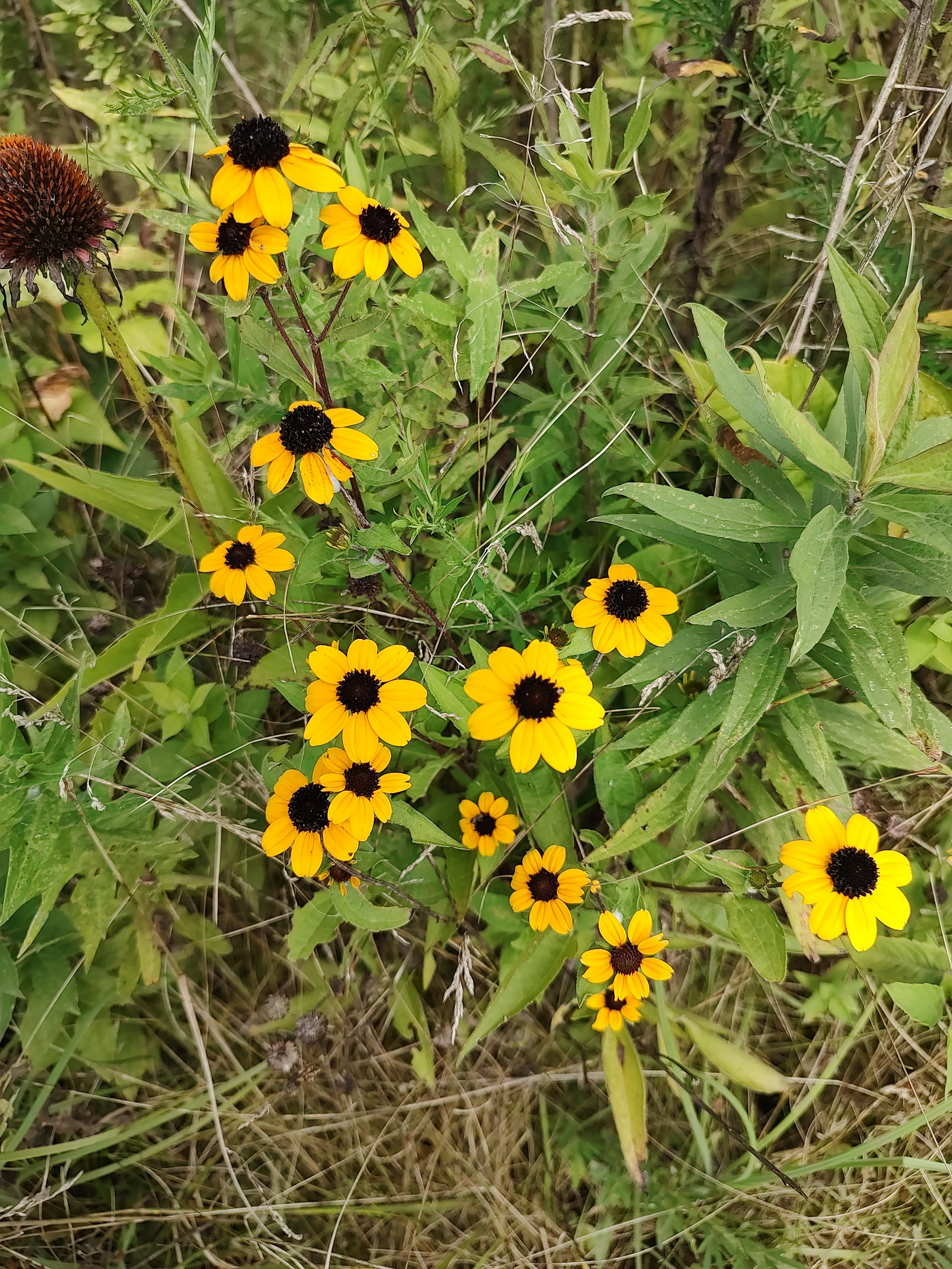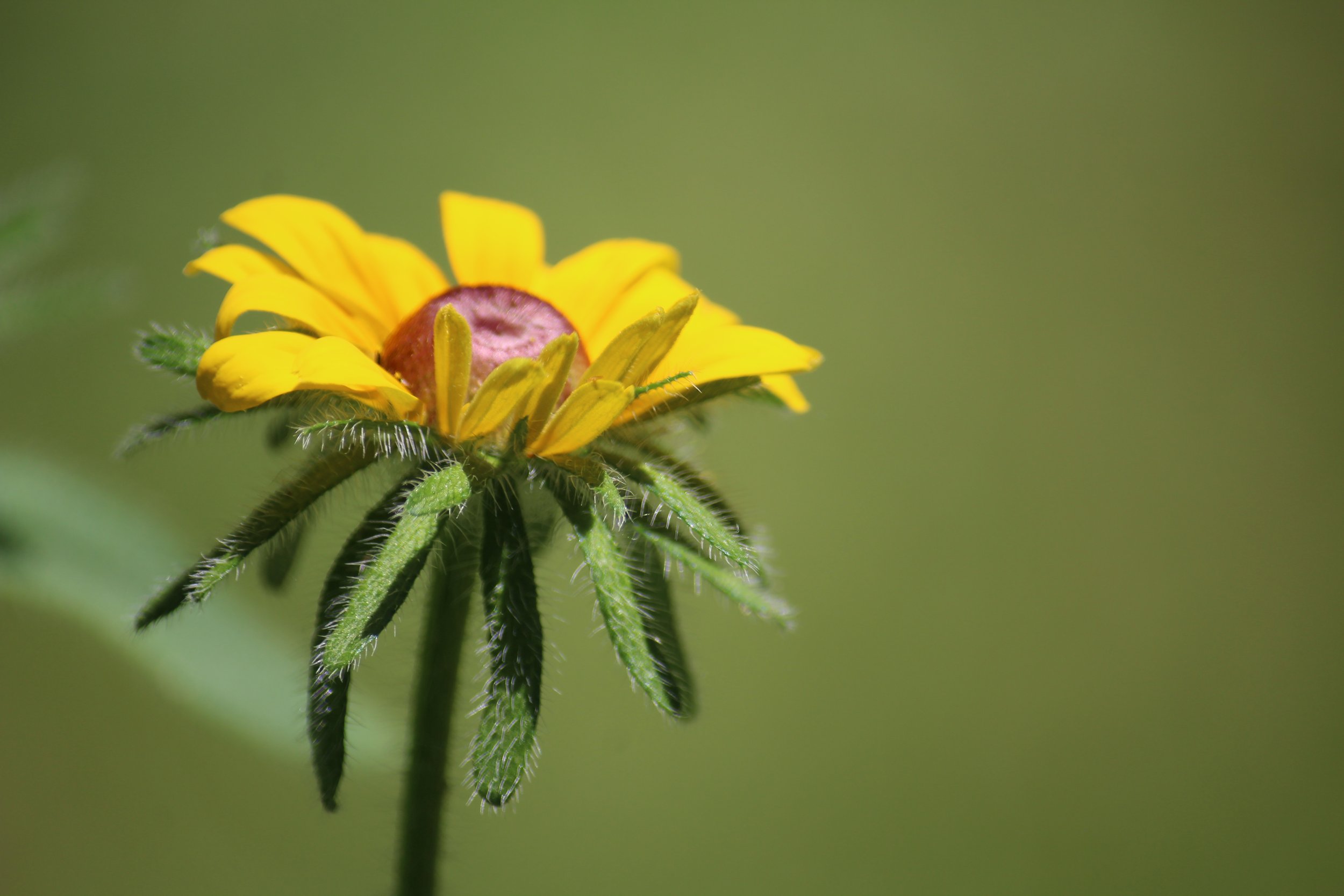July - October
Black-eyed Susan
Rudbeckia hirta
Black-eyed susans are almost ubiquitous in native plant gardens because they are relatively dependable and easy to grow, as well as being charming and colorful. They are early successional plants, more likely than many other native plants to flower in their first year. While they may not live more than 2-3 years, they do self sow easily if allowed to go to seed.
I found it interesting to learn that the genus Rudbeckia was named after a teacher of Carolus Linnaeus, the Swedish scientist that invented the binomial nomenclature system for scientific naming of plants and animals. This seems a huge improvement over its previous scientific name: Obeliscotheca integrifolia radio aureo umbone atro rubente, which literally translates to “Obelisk-like cover entire-leaf ray golden projection dark red”. That is quite a mouthful! Its other common name manages to say this a little more concisely: “black-eyed coneflowers”.
Long before it was imported to Europe where Linnaeus encountered it, Native Americans had many uses for these plants in their pharmacopeia. They used root teas to treat worms, colds, sores, earache, and heart issues. They also used the plant for yellow and green dyes.
Interesting note: black-eyed susans tend to be tolerant to juglones, a chemical produced by black walnut trees that inhibits the growth of competing plants.
Read below to see if this native is a good choice for your garden!
Bloom Time: July - October
Height: 2'-3' H
Cultivation: Native Virginia biennial or short-lived perennial. Best in full sun, moist, organically rich soils. Tolerates heat, some drought, and wide range of soils. Will usually self sow. Harvest seed when tops of coneheads are just beginning to shatter.
Pollination/Insect Interaction: Attracts numerous nectar and pollen seeking insects, such as bees, wasps, flies, and small to medium sized butterflies. Caterpillars of 20 species of moths and butterflies use rudbeckias as host plants in our area.
Wildlife uses: bobwhite quail, turkey, and songbirds eat the seeds in fall and winter. Deer generally avoid eating the plant, but may eat the basal leaves during winter.
Black-eyed susans seen blooming in the pilot plot at the Shenandoah County Landfill. They are also one of the first flowers to start blooming in the experimental phytocapping plot. Often considered a sign of encouragement, these black-eyed susans are definitely an encouraging sign for the Making Trash Bloom project!
The species name “hirta” means hairy, though in fact the leaves and stems of all rudbeckias are characterized by a coating of long stiff hairs. I love the way these hairs shine when the sunlight hits them just right.



